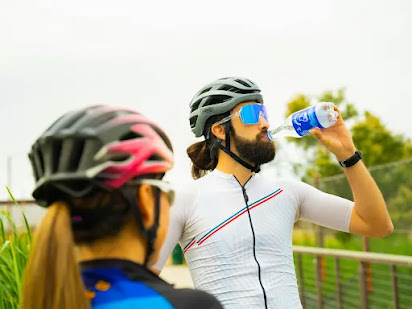If losing water could be so troublesome, why can’t we just keep all the water that’s in our bodies? Surely this can just solve all the mess. Unfortunately, it’s not that simple. We need to sweat while performing activities, especially in hot climatic conditions to maintain an optimum body temperature. The core body temperature regulation is important for cognition, behavior, physical performance and other systemic functions. One of the many things that is special about us is our increased capacity to sweat, thus improving our ability to reduce or maintain a core body temperature well below a critical point. If our body temperature exceeds this critical temperature, we can experience heatstroke symptoms and impaired brain functions. We are superior in this regard as many other land mammals regulate their temperature by panting, which cools the brain and prevents death.
Our physiology enables us to automatically reduce the intensity of exercise if there isn’t proper heat management in place. This could happen if inadequate water is present for sweating or if the environment is exceptionally hot. This default check prevents most of us from causing further harm to our mental and physical functions. At times the body also undergoes heat paralysis, which makes it nearly impossible for anyone to exercise, even if they can continue performing basal-level functions.
It is pitiful to learn of the lack of scientific knowledge and awareness about this physiological aspect even at the highest level internationally. The 1976 Olympic marathon was the first endurance running event in the world to allow athletes to consume fluids in the races without any specific limitations. With the availability of valid and reliable data from the medical community, international sports organisers were better able to understand the physiological needs of athletes during long events.
We do not need an expensive fitness tracker, healthcare device, or an app to remind us to drink water. All we need to do is pay attention to signs. Inbuilt gauge systems inform us regularly about our levels of hydration. The colour of our urine and the perception of thirst are signals that can be very easily understood and followed. It was believed earlier that athletes need to maintain their body weight and consume the same amount of water that is lost by sweat. Recent investigative studies have found that drinking according to one's thirst is more efficient for sports performance.
Sophisticated hydration tracking software is nothing more than a gimmick, and one should be aware of the average ideal volume of water to be consumed under the given circumstances, which is different for every person. It might take a few days of observation and tinkering to get it right, but that is something we can surely invest in.

Comments
Post a Comment